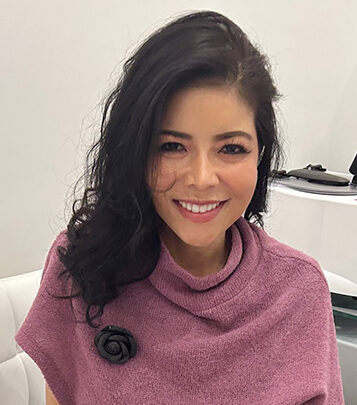Age Spots & Sun Damage
Age Spots & Sun Damage are an unwelcome result of decades of sun exposure when the production of melanin – a natural pigment that gives skin its colour – is overactive and clumped together. Ultraviolet (UV) light accelerates this process, producing dark spots and patches on exposed areas.
Freckles and sunspots often appear in the places of your body that are exposed to sunlight. From individual spots to clusters, you may find them anywhere – even on areas such as your scalp, fingernails, feet, and genitals, which can be difficult to inspect.
Actinic keratoses (AK) are rough, scaly patches of skin that develop as a result of long-term exposure to the sun. They tend to occur on areas of the body where there is frequent exposure to sunlight, such as the arms, hands, face and ears. Fair-skinned individuals with blue eyes who burn easily when out in the sun are particularly at risk for developing AKs. Although these lesions normally cause no real discomfort, they can be itchy or sore and may require medical attention if left untreated over a period of time.
Seborrheic keratoses (SK), also called ‘age spots’ or ‘liver spots’—despite having nothing to do with your liver—are sunspots caused by a combination of ageing and sun exposure. These growths are most likely to appear after age 40, which is why they are also called senile lentigines. They appear as rough, brown, or black spots which can range in size from a few millimetres to several centimetres across.
Frequently Asked Questions
Are Age Spots and Sunspots the Same Thing?
There are many different types of sunspots. Freckles are one of them which are harmless marks created by melanocytes, mature cells responsible for pigment production, that reside all over our body. When activated by excess UV radiation, these melanocytes produce melanin, a pigment substance, that gathers up and develops into freckles. Although they can be inherited, freckles may darken with age and constant exposure to sunlight.
Other types of sunspots, such as “age spots” also known as Seborrheic keratoses (SK) are a combination of aging and sun exposure. These are completely benign skin growth and no treatment is required.
Actinic keratosis (AK), on the other hand, there is a very small risk that can progress into a form of skin cancer, called a squamous cell carcinoma. Therefore, treatment is recommended.
Can Freckles and Sunspots Become Cancerous?
Sun exposure is the main cause of freckles and sunspots, which can increase your risk of skin cancer. Although freckles are harmless, some other types of sunspots may be a sign of skin that is more susceptible to developing skin cancer.
Freckles are more common among people with light hair or lighter skin tones as fair-skinned individuals lack the melanin needed to protect them against ultraviolet radiation; making them more prone to developing skin cancer. As such, those with these marks on their skin need to take extra precautions when spending time in direct sunlight.
Seborrheic keratoses (SK) are usually innocuous and most likely to be asymptomatic. Though they can sometimes be itchy, red or sore, these spots do not spread from person to person nor will they become skin cancer.
Actinic keratosis (AK), on the other hand, there is a very small risk that can progress into a form of skin cancer, called a squamous cell carcinoma. Individuals with this condition are more susceptible to skin cancer compared to those without it.
When to See a Doctor?
Age spots are usually harmless, but it’s important to have your doctor take a look if they become black or appear differently. These changes may be indicative of melanoma—a dangerous form of skin cancer that requires medical attention.
It’s best to have any new skin changes evaluated by a dermatologist, especially if a spot:
- Is very dark
- Is increasing in size
- Has an irregular border
- Has an unusual combination of colours
- Is bleeding
If an actinic keratosis evolves into a lump, increases in size rapidly, becomes sore to the touch, forms an ulcer, or begins bleeding – then it’s time for medical attention as these signs can point towards early stages of skin cancer (squamous cell carcinoma). The people most susceptible are those with several patches of AK and immunosuppressive individuals or on immunosuppressive medication due to other conditions.
Dr Miller is here to help
It is essential to differentiate age spots from other conditions of the skin because each requires unique treatments; utilising incorrect methods can prolong further action. Dr Miller will assess sunspots and age spots through a series of questions and an examination.
If uncertain, she may use additional tests such as extracting a tiny piece of your skin for lab testing (skin biopsy). This helps distinguish between an age spot or lentigo maligna – just one example of certain types of skin cancer. The procedure is usually performed at the clinic with local anaesthesia given beforehand.
If you have harmless sunspots or age spots that require interventions, Dr Miller will go over available treatment options to reduce their appearance.






